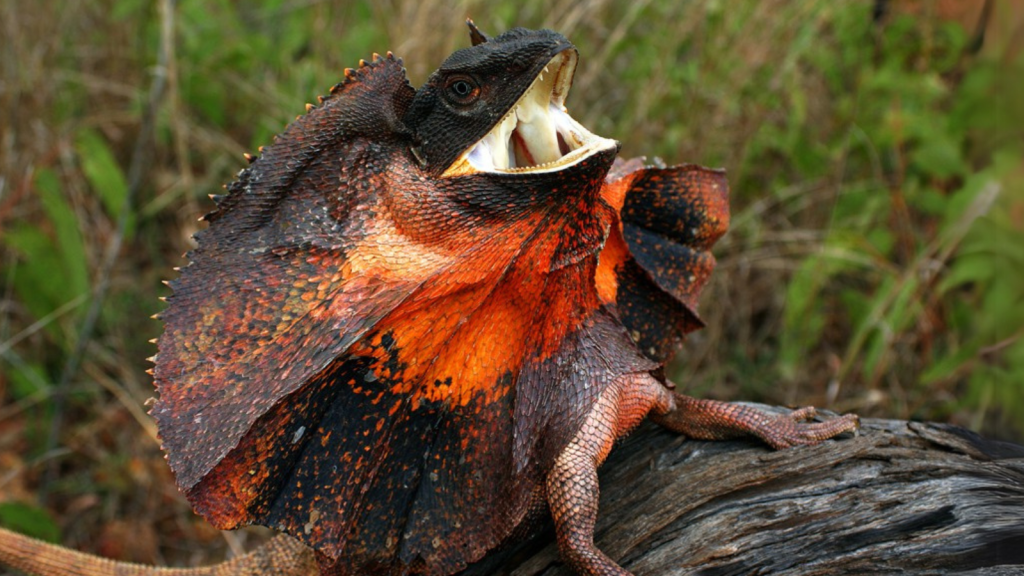G’day, nature lovers! Imagine walking through the Australian outback and stumbling upon a creature that looks like it’s stepped right out of Jurassic Park. That’s the frilled lizard for you – a living, breathing reminder of prehistoric times. With its impressive neck frill and dragon-like appearance, this reptile is a true Aussie icon. But there’s more to these scaly wonders than meets the eye. Get ready to discover some mind-blowing facts about these fascinating creatures that roam the Land Down Under.
A Frill That Would Make Shakespeare Jealous
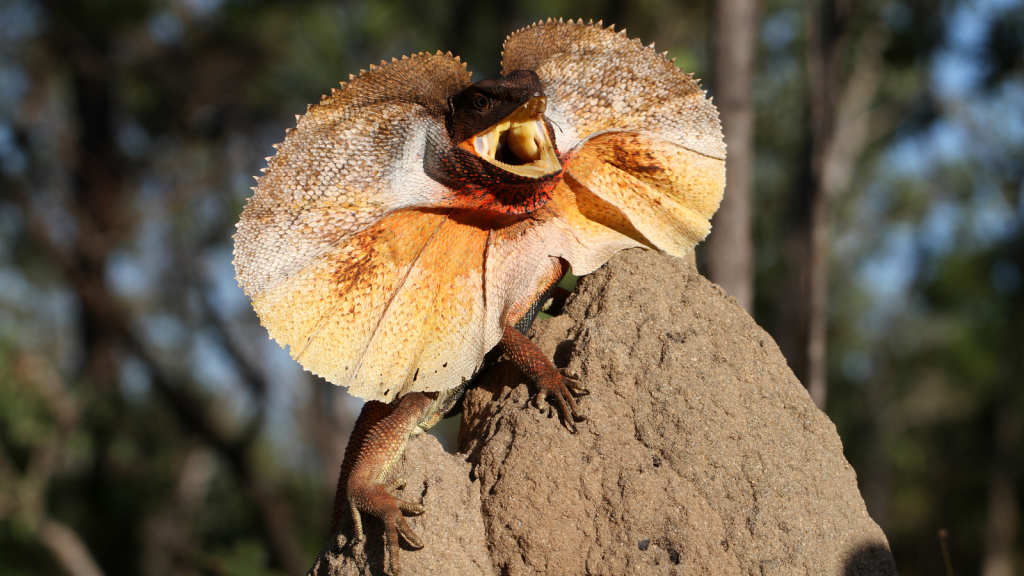
The frilled lizard’s most striking feature is, of course, its frill. This circular flap of skin around its neck can spread out to an impressive size, making the lizard appear much larger than it actually is. When threatened, the lizard pops open its frill, hisses, and stands on its hind legs – a sight that would give anyone a proper fright! The frill can expand to nearly three times the size of the lizard’s head, creating a formidable display that often sends predators running.
Masters of Camouflage
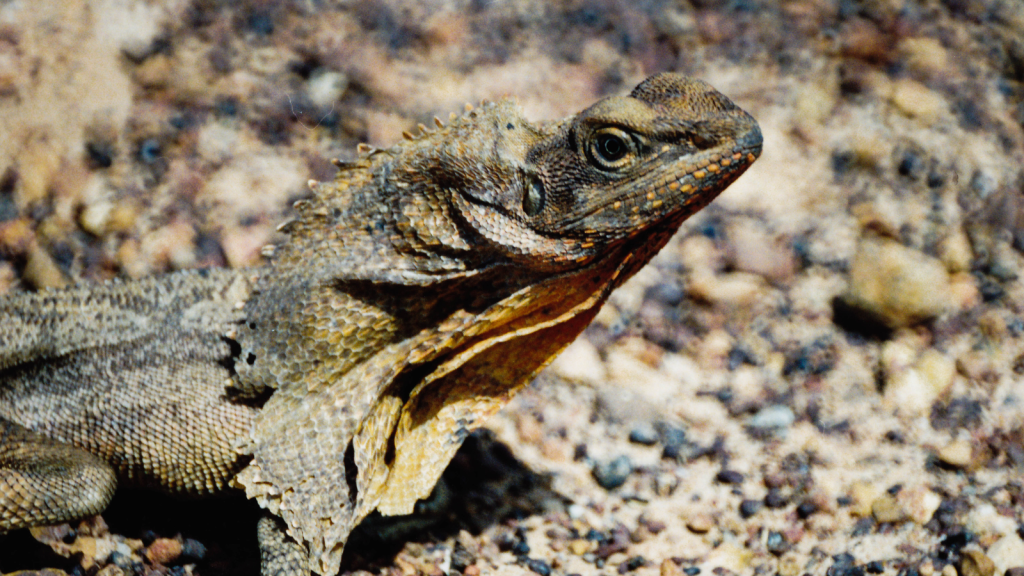
Despite their flashy frill, these lizards are experts at blending in. Their scaly skin comes in various shades of brown, grey, and sometimes even red, allowing them to disappear against tree bark or rocky outcrops. This clever disguise helps them avoid predators and sneak up on unsuspecting prey. Their camouflage is so effective that they can remain motionless for hours, virtually invisible to the untrained eye.
Sprinters on Two Legs
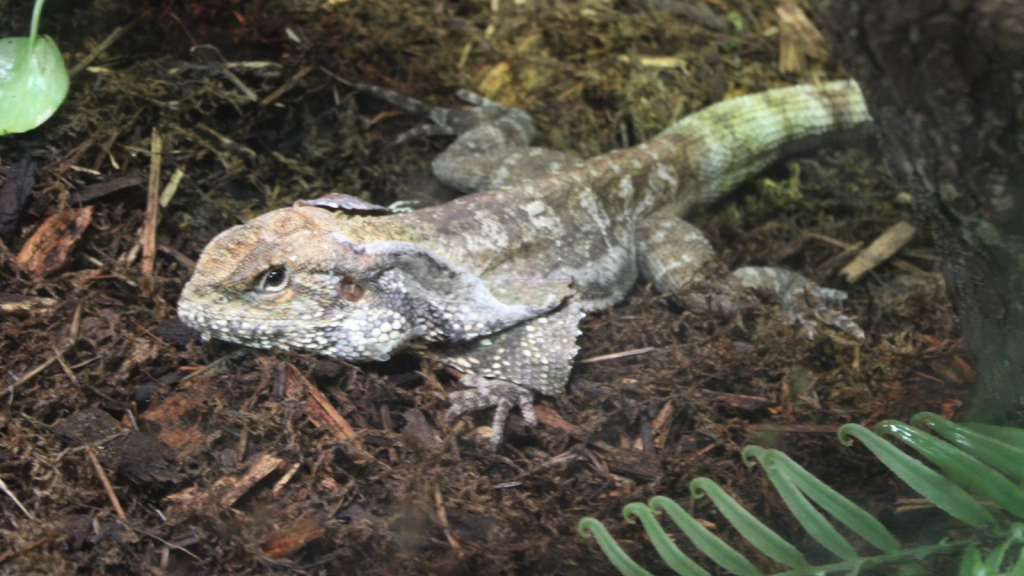
When it’s time to scarper, frilled lizards don’t mess about. They can run at speeds of up to 20 miles per hour on their hind legs, looking like miniature T-rexes as they dash for safety. It’s a sight that would leave even the fastest human sprinters in the dust! This bipedal running ability is rare among lizards and is thought to have evolved as an efficient escape mechanism from predators.
Not Just a Pretty Face

The frill isn’t just for show – it serves several important purposes. Besides intimidating predators, it helps regulate body temperature and may even play a role in courtship displays. Talk about a multi-tasking accessory! The frill also contains numerous blood vessels that can change colour, allowing the lizard to communicate with others of its species.
Aussie Through and Through
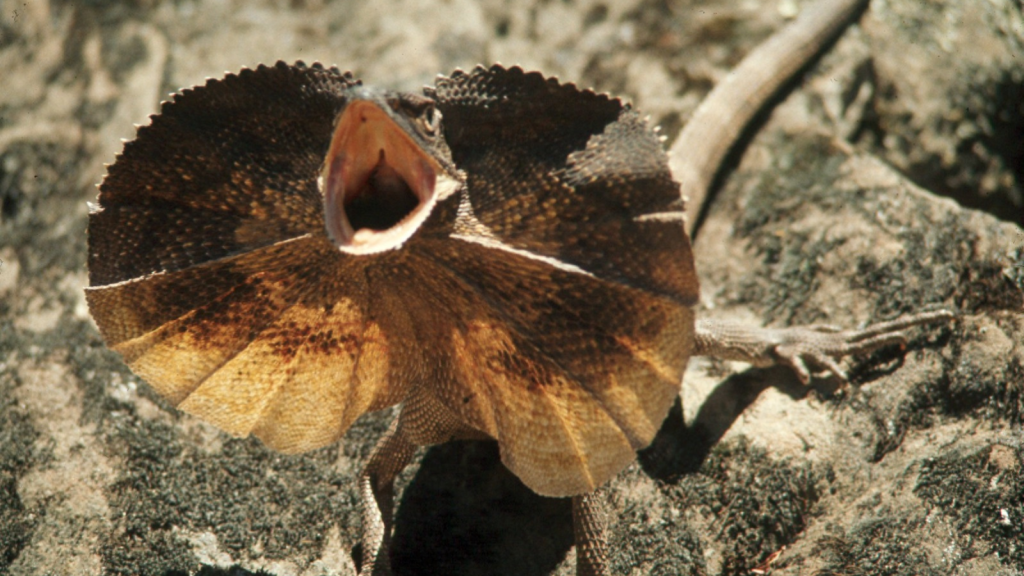
Frilled lizards are found exclusively in northern Australia and southern New Guinea. They’re particularly common in the tropical and warm temperate forests of the Northern Territory and Queensland. These true-blue Aussies have adapted perfectly to life Down Under. They’re especially fond of eucalyptus forests, where their camouflage works best against the mottled bark of gum trees.
Insect Terminators
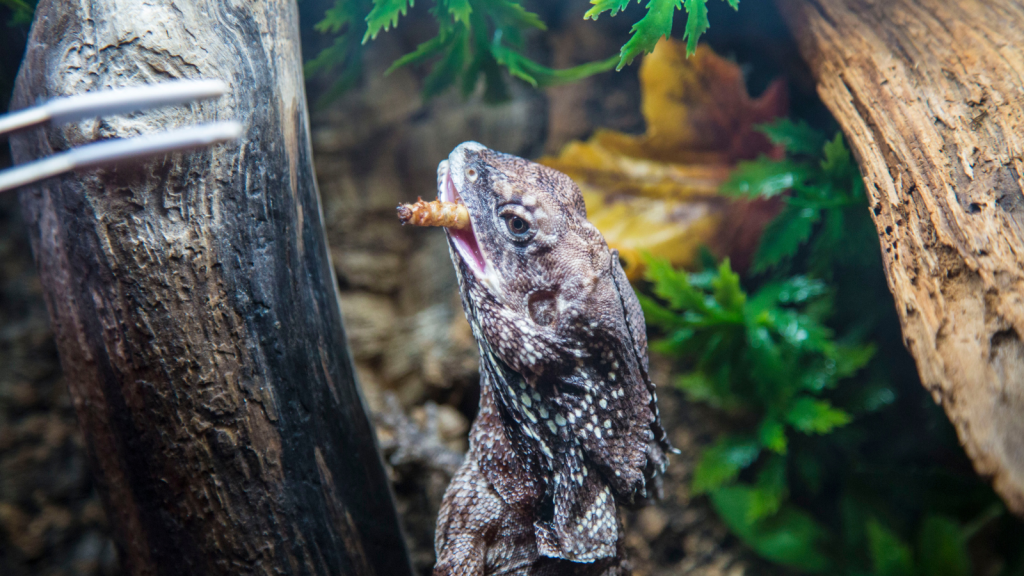
With a diet consisting mainly of insects, frilled lizards are nature’s pest control experts. They munch on everything from beetles and cicadas to butterflies and spiders. Their hearty appetite helps keep insect populations in check, maintaining the delicate balance of their ecosystems. In times of abundance, a single frilled lizard can consume hundreds of insects in a day, making them valuable allies for farmers and gardeners.
Sun-Loving Lizards
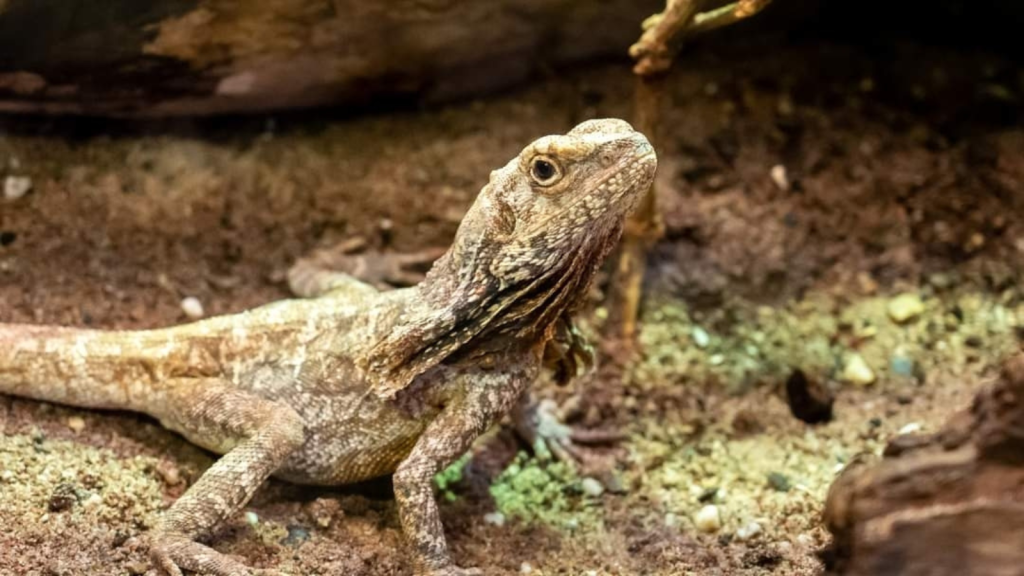
Like most reptiles, frilled lizards are ectothermic, meaning they rely on external sources for body heat. They’re often spotted basking in the sun on tree trunks or rocks, soaking up those warm Aussie rays to get their daily dose of energy. This basking behaviour is crucial for their digestion, as higher body temperatures allow them to process food more efficiently.
A Frill for All Seasons
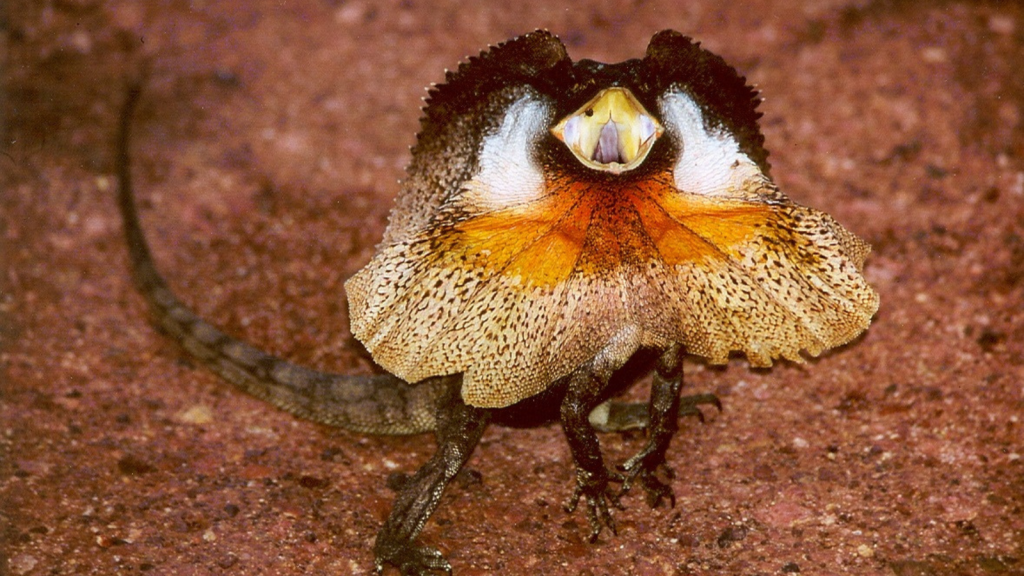
The size and colour of a frilled lizard’s frill can vary depending on the season and the lizard’s location. During breeding season, males often develop larger, more colourful frills to attract mates and intimidate rivals. It’s like nature’s own fashion show! The frill’s colour can range from pale yellow to bright red, with some individuals sporting intricate patterns that make them truly unique.
Egg-cellent Parents
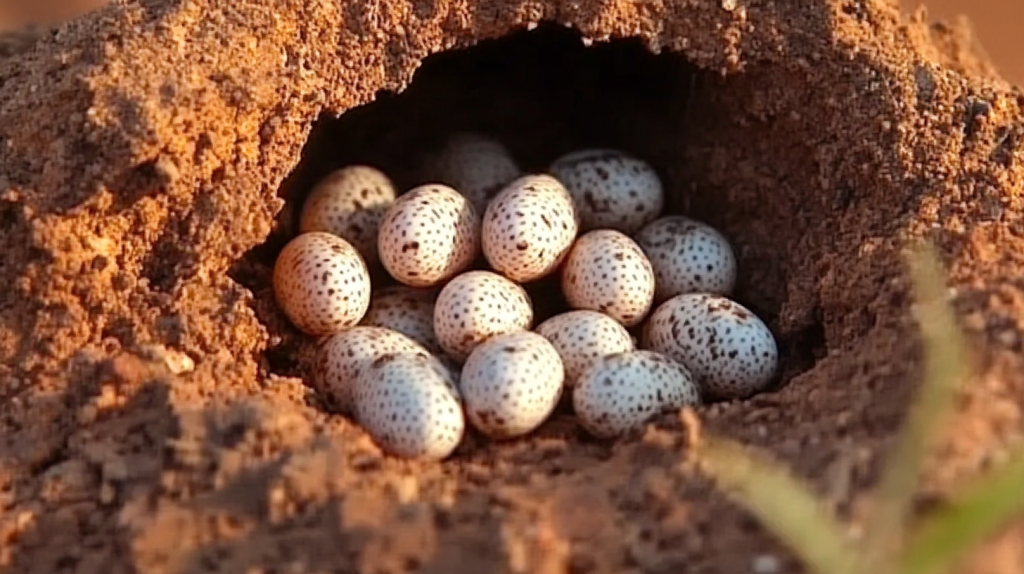
Female frilled lizards lay between 8-23 eggs in shallow nests dug into the ground. Unlike some reptiles, they don’t just leg it after laying. Instead, they stick around to guard their eggs for several weeks, ensuring their little ones have the best start in life. The incubation period typically lasts about 8 weeks, with the tiny hatchlings emerging ready to fend for themselves.
Living Large
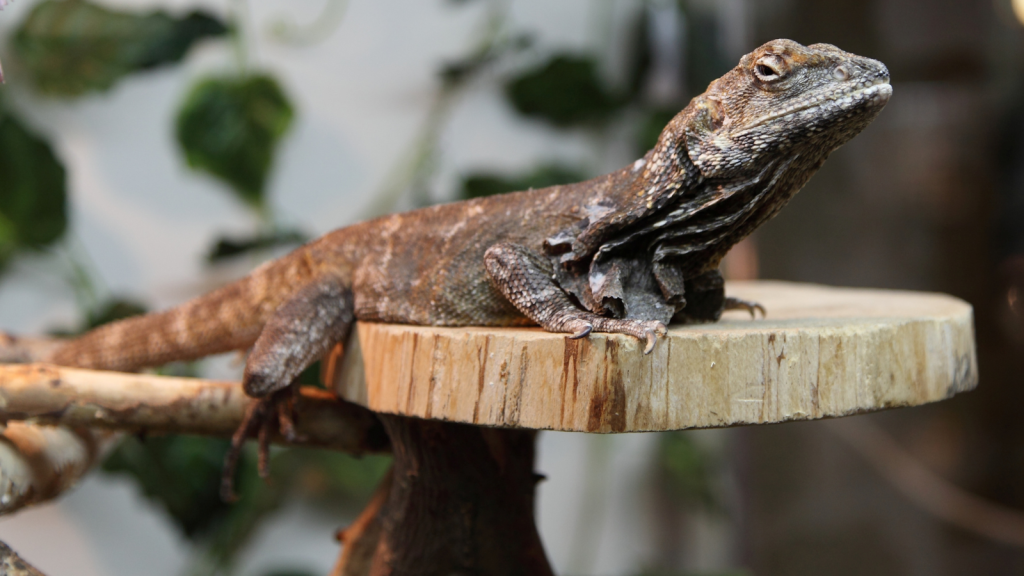
These impressive lizards can grow up to 3 feet long, including their tail. That’s about the size of a small child! However, most of this length comes from their long, whip-like tail, which they use for balance when running and climbing. The tail also serves as a counterbalance when the lizard is standing on its hind legs, helping it maintain its upright posture during defensive displays.
Tree-Hugging Tendencies

Frilled lizards are arboreal, meaning they spend much of their time in trees. Their sharp claws and long toes make them excellent climbers, allowing them to scamper up tree trunks with ease. It’s their own personal highway system! Their tree-dwelling habits also provide protection from ground-based predators and give them a vantage point to spot potential prey.
A Jurassic Park Connection
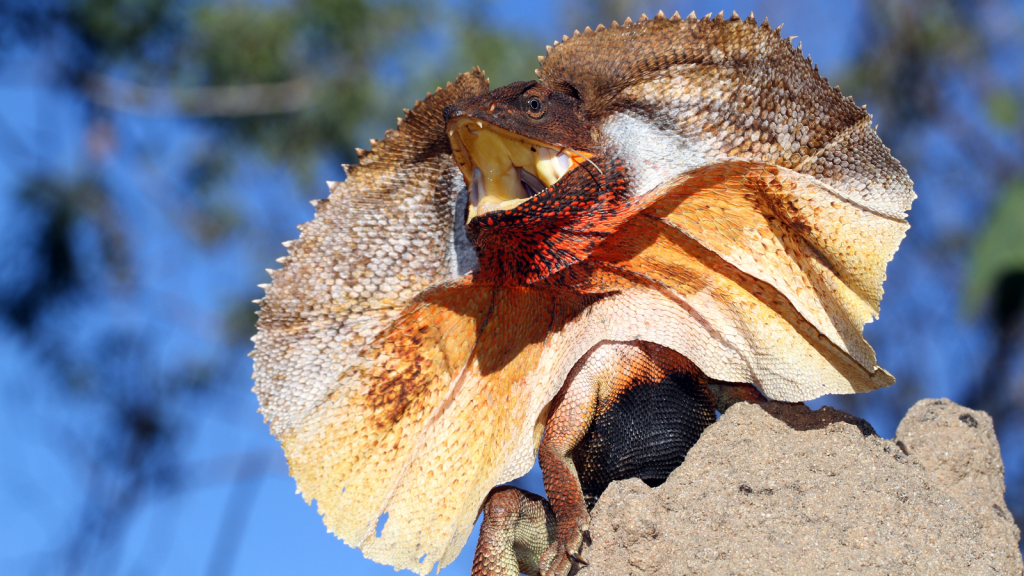
The frilled lizard’s prehistoric appearance hasn’t gone unnoticed by Hollywood. These lizards inspired the design of the Dilophosaurus in the film Jurassic Park – although the movie version was given a few extra frills for dramatic effect! While the film took some creative liberties, the frilled lizard’s appearance does indeed harken back to the days of the dinosaurs, making it a living fossil of sorts.
Built-in Air Conditioning
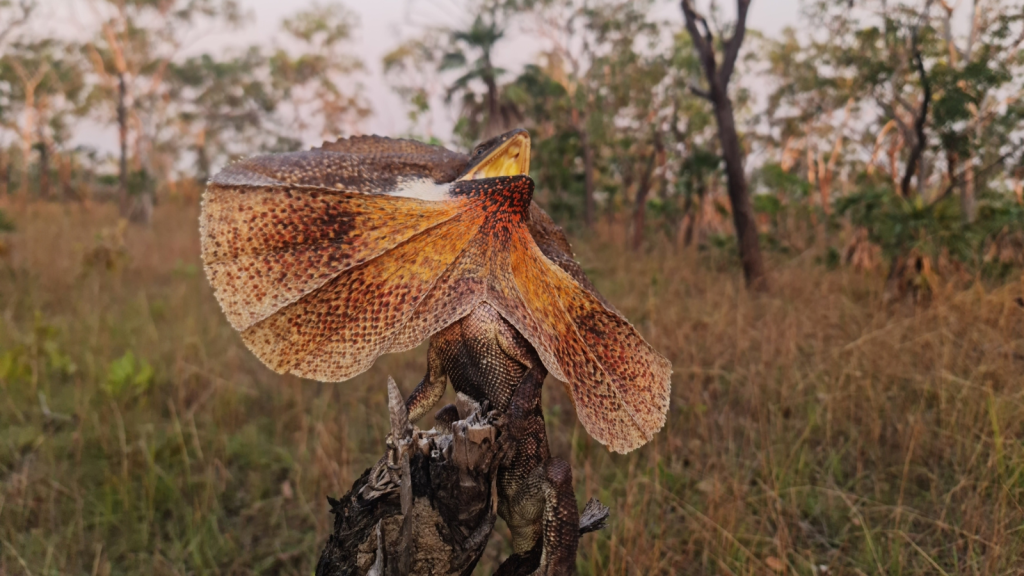
In addition to temperature regulation, the frill also helps cool the lizard down. Blood vessels in the frill dilate when the lizard is hot, allowing excess heat to escape. It’s like having a portable fan attached to your neck! This adaptation is crucial in the hot Australian climate, allowing frilled lizards to remain active during the hottest parts of the day when many other animals seek shade.
A Vulnerable Icon
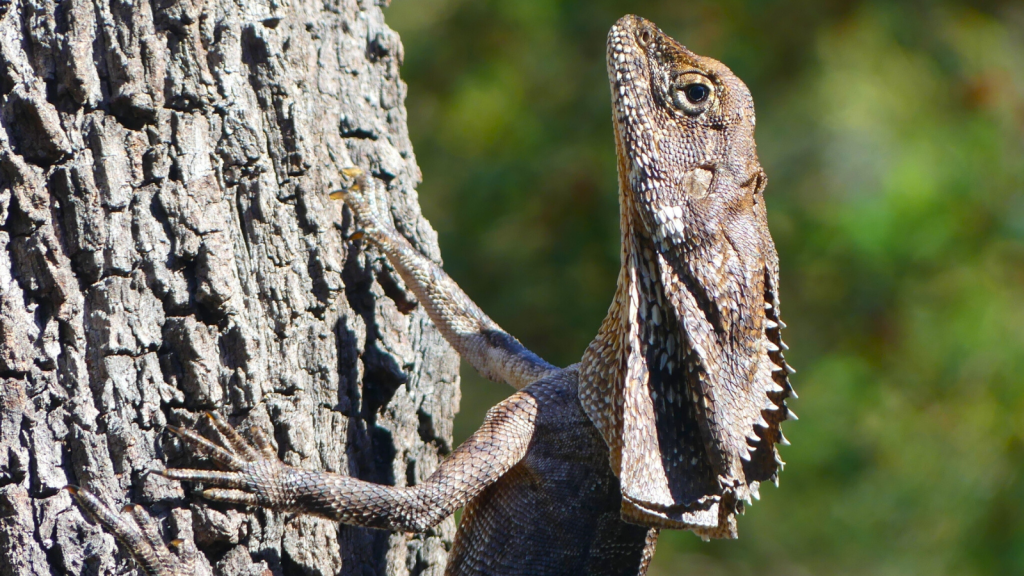
Despite their tough appearance, frilled lizards face threats from habitat loss and introduced predators like cats. Conservation efforts are underway to protect these unique creatures, ensuring future generations can marvel at Australia’s very own dinosaur lookalikes. Public education programs and habitat preservation initiatives are key components in safeguarding the future of these remarkable reptiles.
Becky is a fervent wildlife enthusiast and pet care expert with a diploma in canine nutrition. Her love for animals stretches beyond the domestic, embracing the wild tapestry of global fauna. With over a decade of experience in animal welfare, Becky lends her expertise to OutlandishOwl through insightful articles, captivating wildlife information, and invaluable guidance on pet nutrition. Her work embodies a deep commitment to understanding the intricate lives of animals and a passion for educating others on sustaining natural habitats. Becky's hands-on conservation efforts and her knack for translating complex dietary science into practical pet feeding tips make her an indispensable voice for creatures great and small.

